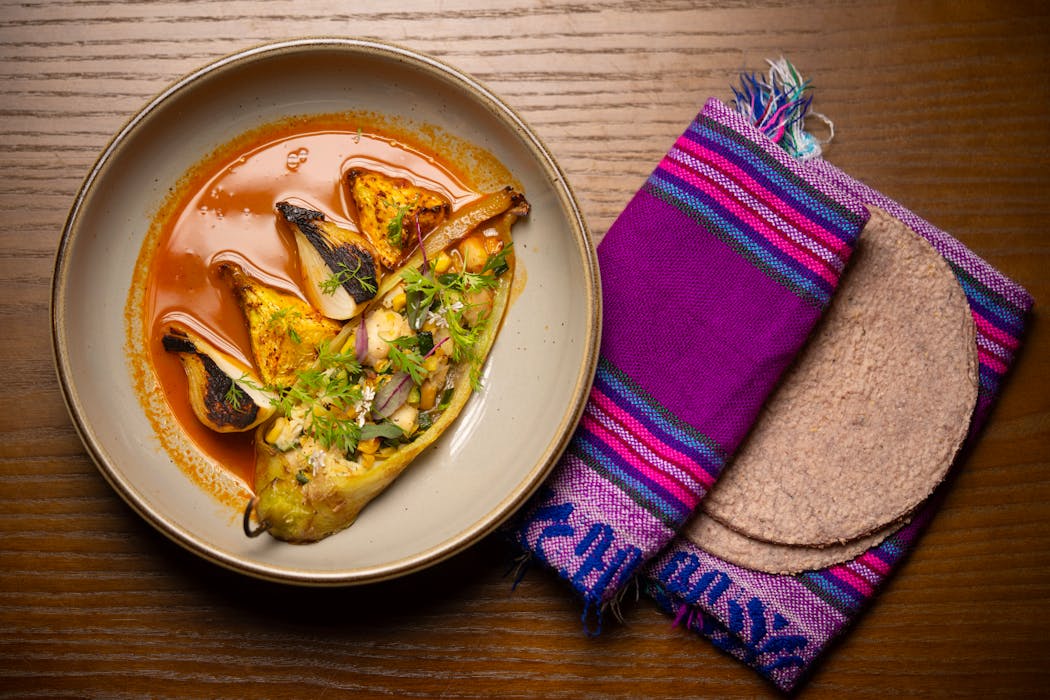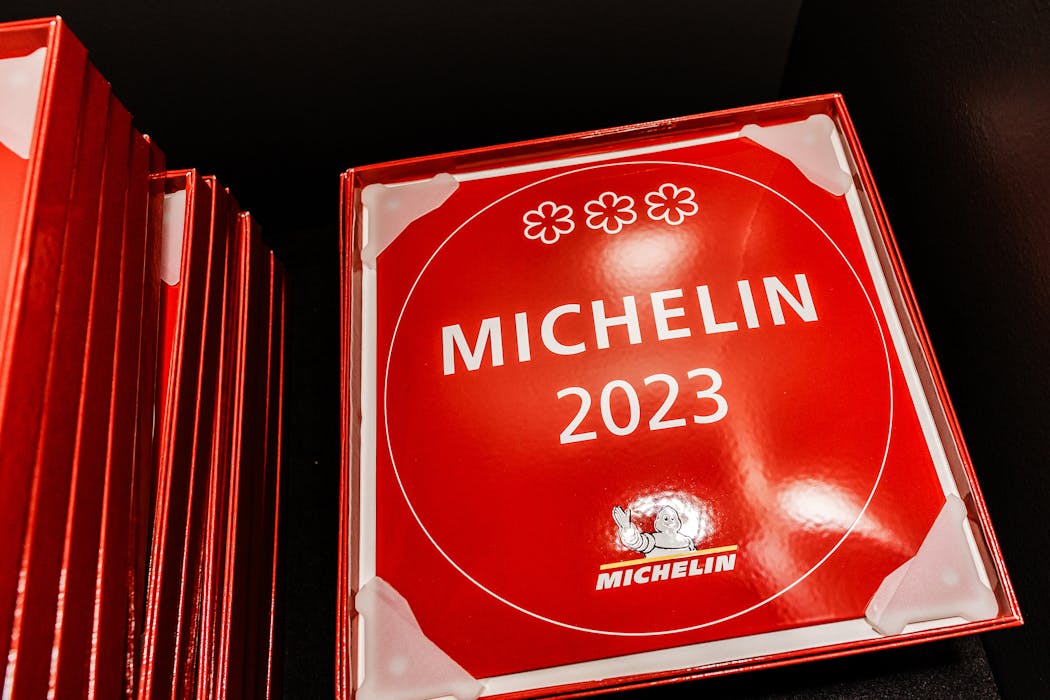I remember the red book as if it were a bible, because I carried it with me every time I visited a city that the Michelin Guide deemed worthy.
When New York's first Michelin Guide was published in 2005, I read it cover to cover, committing each starred entry to memory, reading what the inspectors wrote, and detailing my imaginary dining plan for a city that my family had yet to visit. I did the same for Paris, Rome and eventually Tokyo. According to the guide, three stars means "worth a special journey." What were we waiting for?
I was lucky to have made it to a few special restaurants in these cities during my youth — after as much begging and negotiation that a teenager could muster. Each time, I marveled at the consistency of starred restaurants across continents. The rigor of the grading system was, and continues to be, peerless.
In the United States, fewer than 300 restaurants have Michelin stars. In Chicago, more than 20 restaurants do. Restaurants in the Upper Midwest, inclusive of the Twin Cities, could therefore use the same recognition.
The cases for why are well documented — beyond a status symbol, it elevates and validates our dining scene — and the tourism boards of places such as Colorado and Atlanta have taken action to advocate and pay for a guide on far less compelling grounds. This position has been affirmed by fellow Twin Cities food writers and several vocal chefs. Now it's our turn. Here are my four (subjective) picks.
Two stars: Excellent cooking, worth a detour
Demi
If there's one place remotely capable of clinching two stars, it's Gavin Kaysen's intimate temple of gastronomy. On select nights of the week, 20 diners seated at a wraparound counter are given the opportunity to sample a procession of thoughtfully and carefully executed dishes. Across my 10 visits there over the past two years, I've swooned over judiciously roasted wild boar with mezcal jus, foie-gras terrine as smooth as frozen custard, a Midwestern take on pommes dauphine, and tagliarini pasta fashioned from chestnut. It's the restaurant's ability to conjure extraordinary culinary experiences from less "prized" ingredients, like humble green beans in a tartlet, that elevates Demi to a level that few can replicate elsewhere. And when the only thing left for improvement is the stemware and silverware, then you know everything else is a winning hand.
212 N. 2nd St., Mpls., demimpls.com; open Wed.-Sun. with seatings from 5:15-7:45 p.m.
One star: High-quality cooking, worth a stop
Alma
Alma is nearly a quarter-century old, but it follows the adage that some (great) things never change. That's probably because its food remains as classically delicious as ever, and this merits a star in the same way that its closest analog, New York's Gramercy Tavern, does. I remember quietly marveling at balsamic-glazed duck two years ago (rendered skin, moist flesh, wildly flavorful) and noticed I did the same with an identical preparation last fall. The griddle cakes did it for me, too. As did those savory custards, which make an appearance every so often. It's a testament to the fortitude and talents of chef and co-owner Alex Roberts and his team, Lucas Rosenbrook and Maggie Whelan, that you'd immediately want to plot a return visit despite knowing the food will be the same. We wouldn't have it any other way.
528 University Av. SE., Mpls., almampls.com; open 5-8:30 p.m., Thu.-Sun.
Kaiseki Furakawa
There are only a few Japanese restaurants in the Twin Cities, but that doesn't mean that there can't be an extraordinary one. Chef Shigeyuki Furukawa presides over a concept so wholly unique that it still is underrated, nearly seven years after its opening. A typical dinner here may involve 10 or so courses of intricately, beautifully prepared small plates. During a recent meal, I had grilled sea bass from Chiba, a prefecture in Japan, in a clear but potent dashi; silken tofu made from Minnesota corn; and tender octopus gently steeped in a hot broth. These dishes were reminiscent of the fare served at Michelin-starred kaiseki eateries in Kyoto, Japan — calibrated ever so slightly for location. And the ambience is a quiet gem.
33 1st Av. N., Mpls., kadonomise.com/experience/kaiseki-furukawa; open Tuesdays only.
Myriel
When Karyn Tomlinson opened St. Paul's Myriel in late fall three years ago, the florid explanations that servers would give about the dishes' provenance felt theatrical. It also felt appropriate. Could carrots, greens and brined cheese sourced from these boutique purveyors really be this good? Yes, as it turns out. The passion that Tomlinson brought to each dish on both her tasting menu and among the more accessible a la carte options was clear. Dishes I treasured the most included sunchoke soup gilded with duck fat; lean yet uniformly juicy lamb loin with cream accented with juniper; and the most virtuous apple pie I've had in years. The ingredients speak for themselves, but so does the kitchen's hand at executing them.
470 S. Cleveland Av., St. Paul, myrielmn.com; open 5-9 p.m., Wed.-Sat.
Wild card: Nearly worthy of a star
Oro
Gustavo Romero curates a star-worthy menu that skillfully blends the traditions of his native Mexico alongside the culinary journey he's made from Italy to California, before settling in Minneapolis along with his partner and co-owner, Kate. The tacos, made from heirloom, nixtamalized corn — which he takes very seriously — deliver elemental pleasure. So do his platos, like duck confit with a nuanced mole; or a tenacious but yielding lamb barbacoa. On pure culinary merits, Oro clearly delivers. But it still is a restaurant in flux. In time, hopefully soon, as the restaurant evolves to match the level of food it serves, it will no doubt be a worthy contender.
1222 NE. 2nd St., Mpls., nixtampls.com; open 4-9 p.m. Wed.-Sat.
What to know about Michelin ratings
The founding mission of the Michelin Guide was to "foster a culture of travel and eating out." It has since evolved from being a handy travel guide for road trips more than a century ago to a global bucket list for food aficionados.
Visiting restaurants: The Michelin Guide team selects restaurants for its anonymous reviewers, called inspectors, to visit in certain geographic areas. They write reviews about their experiences on several criteria, then meet with other inspectors to discuss which restaurants are worthy of stars. Inspectors visit a restaurant "as many times at it takes" to get a complete picture, but it's a different inspector each time. They spread visits across seasons, lunch and dinner, and weekdays and weekends. There are roughly 120 Michelin inspectors, and all are full-time employees and former restaurant or hospitality professionals.
The criteria: A Michelin inspector is charged with rating a restaurant on five criteria: Quality of products, mastery of flavor and cooking techniques, the personality of the chef in the cuisine, value for the money, and consistency of the food between visits. What's not on the official list to be considered? Ambience, decor and quality of service.
The stars: Restaurants are given one to three stars (or none) that need to be earned each year. One star means "a very good restaurant in its category," two stars is "excellent cooking, worth a detour," and three is "exceptional cuisine, worth a special journey." And yes, Michelin does take away stars. An important note: Michelin stars are awarded to restaurants, not individual chefs.
Fun fact: Based in Paris, the first Michelin guide was handed out in 1900 by the founders of the Michelin tire company to create a demand for automobiles. In addition to maps and restaurant guides, there were instructions on how to change a tire.
Sources: Michelin and Auguste Escoffier School of Culinary Arts





